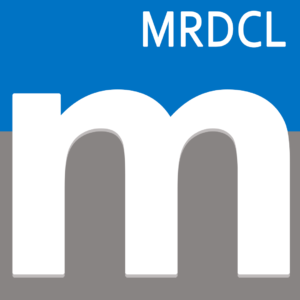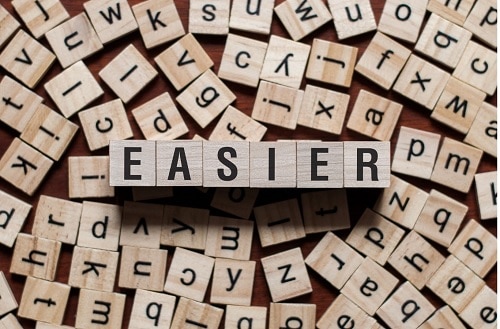Carrying out complex survey data analysis and producing crosstabs can mean that staff need to re-think and re-work every survey they handle. The unique design of MRDCL allows users to create flexible enough templates to meet many, if not all, of their needs.
Improving automation and productivity
It’s easy to imagine that templates deal with the simple things well; that is true. However, MRDCL templates can both make laborious tas
- The reasons for using templates
- Three examples of different types of templates
There is another blog article that you will help you to:
- Plan and develop templates
- Manage your templates
What is a template?
Let’s start at the beginning and consider what a template is. Whether you are using a template for your diary, the look and feel of your online questionnaires or your shopping list, templates should make things easier. They should avoid the need for repetitive work and minimise the re-thinking you need to do when a similar task presents itself.
Why use templates?
There are some obvious reasons but some special benefits when using MRDCL templates. The obvious reasons are:
- Productivity gains
- Brings in standards
- Reduces errors
- It makes it easier to share/hand over projects
But, consider the reasons particularly important to MRDCL:
- Less-skilled staff can carry out tasks previously handled only by the highly skilled staff
- Separates skilled and less skilled tasks
- Only need to conceive solutions once
- Laborious tasks take less time
Improving automation: our claim
I think the best way to justify these claims is to outline three completely different examples. Example 1 looks at how it makes sense for the right people to perform each role in a task. Example 2 focuses on how you can simplify a complex task. Example 3 makes a laborious task easy. So, let’s explore each.
Example 1: Handling open-ended code lists
The task
Imagine that a coding team or someone using coding software is responsible for generating code lists for open-ended questions. Let’s assume that the project researcher often wants to group some codes to produce nets or sub-totals when the data analyst produces tables.
The problem
It is not uncommon to find that the code list is available as a Word document or an unstructured spreadsheet. The data analyst then has to paste these codes and texts into the tabulation software or, perhaps, re-type everything. When the researcher receives the tables, she may want to group some codes. This task can waste the data analyst’s time, particularly if there are many open-ended questions or long code lists. What if there are some updates to the code lists or the researcher changes her mind. All this work falls on the shoulders of the data analyst when, in my opinion, it should not. A software solution like an MRDCL template provides a simple, efficient and practical solution.
The MRDCL template solution
If the coders use a simple spreadsheet to an agreed format, the data analyst can use an MRDCL template by doing nothing more than setting a reference to the workbook name and the worksheet name. If the code list has an update, the data analyst does nothing besides re-running tables. Similarly, the data analyst does nothing if the researcher marks up the same spreadsheet with the required nets and sub-totals to an agreed notation. This approach improves productivity. It saves “double-specification” where two people perform the same task. It brings in standardisation at a minimal overhead as usage of the MRDCL template can be taught in a few minutes.
Result
Possibly a saving of 1-2 hours per open coded question. Imagine if you run 30 surveys per year which have an average of 6 open-ended questions. That’s a saving of, perhaps, 300 hours. If each hour costs $15 per hour, that’s $4500 per year saved.
Example 2: Tables from rating scales
The task
Nearly every market research questionnaire has one or more sets of rating scales. The analysis you want from rating scales is, however, quite varied. Here are some examples:
- Summation of the top two boxes and the bottom two boxes.
- Top two boxes only calculated
- Summary table with each statement side by side in each column
- Mean score summary
- Summary of top two boxes by a banner etc. etc.
- Mean score with % agree for each statement
The list goes on. In a workshop, one of our clients came up with 18 table types that they commonly needed from rating scales – most were quite similar, but they proved quite time-consuming to produce the variants required for each project for the data analysts.
The problem
Due to the variety of tables needed, each project requires the specification of similar yet different needs. This approach led to repetitious work, a high level of errors, and the overuse of highly skilled staff.
The MRDCL template solution
By producing an Excel template, it was possible to have all the different table types pre-programmed behind an easy-to-use form that acted as a template. It simplified things considerably. Researchers or junior data analysis staff could select the type of output needed. The complexity was not choosing the correct output type but programming the requirements for every project. The template also allowed researchers to change the tables they wanted or add different outputs in seconds, offering greater flexibility.
Result
The benefits are deskilling of tasks, flexibility, reduction in errors, as well as obvious time savings. Putting a cost benefit on this particular template is more difficult. However, automation and streamlining systems can go beyond the cost of staff time. It means that you can provide clients with a better service, avoid duplication of effort, and use the right staff level for a particular task. If costed properly, this can amount big advantages in many cases.
Example 3: Merging external data
The task
With increasing amounts of data readily available, survey data does not always sit separately from other data relating to respondents. You may conduct a customer service or customer satisfaction survey but have data from another source about the respondents that you wish to analyse alongside your survey data. A template can make this easy to achieve.
The problem
Many tabulation software packages require all the respondent data to be in one file. Suppose you need to merge other data about each respondent, such as their annual spend, buyer type or other information from a CRM system or external source. In that case, this can require a lot of data manipulation or recoding. MRDCL templates allow you to have a simple solution.
The MRDCL template solution
An Excel template allows merging external data to be a clerical task rather than a complex data management task. By organising data into fields in a CSV file or Excel file, the template can read the data and automatically prepare the variables from the data. It means that the variables are ready to be analysed against any survey data in a few minutes.
Result
I have seen data processing staff spend hours merging data with survey data. Often, it is a series of steps that requires manipulation of the data or output data as a new file with the two sets of data merged. Not only is this a cumbersome, error-prone task, but it can mean going through all the steps again if there is additional data or corrected data. On a tracking study, this could lead to repetitious work for every wave of a survey. The template removes these steps, making it a simple clerical task that is easy to manage. Further, you can use the system on multiple projects with minutes of work rather than hours or days.
Summarising these template example s
s
Of course, these are only examples, and your needs may be quite different. However, they hopefully demonstrate that there is an opportunity to be far more productive where you have tasks you may want to repeat.
Implementing the right approaches to building MRDCL templates
As with many smart ways of doing things, there are good practices and not so good practices. MRDCL templates offer you the chance to automate processes, increasing flexibility and productivity. To help you maximise your use of building and managing MRDCL templates, you can learn more here. If productivity matters to you, MRDCL templates are a tool you should not ignore. It gives you an edge over the competition who do not have access to such advanced systems.





